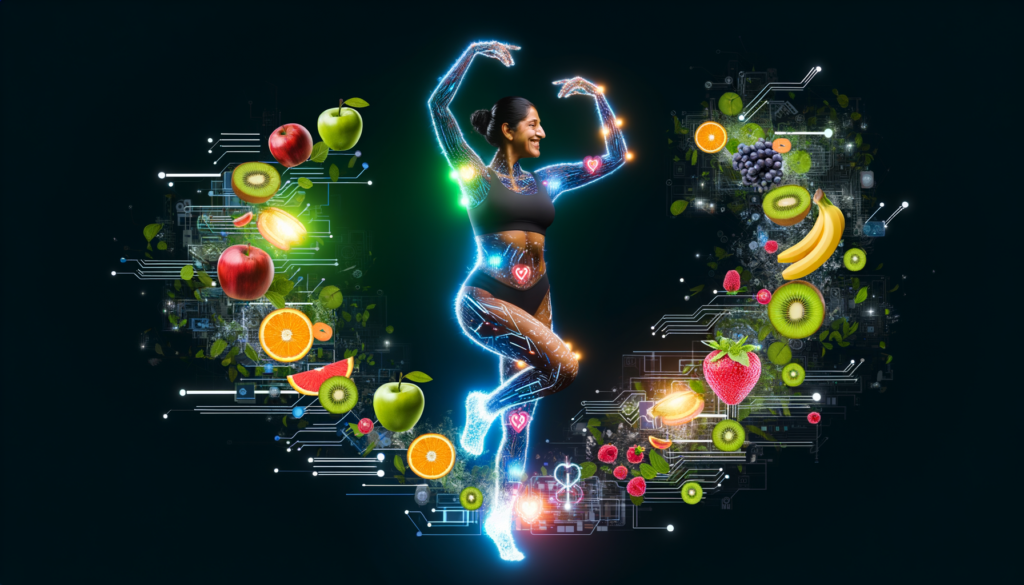Revolutionizing Nutrition Tracking: The Rise of Voice-Activated Assistants
In the ever-evolving landscape of health and fitness, one of the most significant advancements in recent years is the integration of voice-activated assistants for nutrition logging. This technology is not only making the process of tracking dietary intake more convenient but also enhancing the overall user experience. Here, we delve into the world of voice-activated nutrition, exploring its benefits, real-world applications, and the future of smart home health.
The Benefits of Voice-Activated Nutrition Logging
Voice-activated nutrition logging offers several advantages that make it a preferred method for many users. Here are some key benefits:
One of the primary advantages is the simplicity and ease of use. With voice-activated AI, logging meals becomes as easy as having a conversation. Users can simply speak to their device, and the AI will record and analyze their food intake, eliminating the need for manual typing or scanning barcodes[2][4][5].
Another significant benefit is the improved user experience, particularly for younger users who are more inclined to use voice technology over text-based methods. Studies have shown that voice technology leads to more frequent and longer-duration food logging, indicating higher user engagement and adherence to dietary tracking[4].
The accuracy of voice-activated logging is also noteworthy. Advanced AI technologies, such as those integrated into apps like Noom, use sophisticated speech-to-text engines and machine learning algorithms to ensure precise food recognition and nutritional analysis. This accuracy is further enhanced by the ability to recognize various accents and inflections, making the technology accessible to a broader audience[3][4].
Real-World Applications and Case Studies
Several companies and apps are at the forefront of integrating voice technology into their nutrition solutions.
Noom, for instance, has introduced Welli, an AI-powered personal health assistant that supports photo, text, and voice-based food logging features. This integration allows users to effortlessly track their meals and receive immediate wellness support and advice from the AI chatbot, 24/7[3].
Lifesum, another notable example, has partnered with Google Assistant to enable users to personalize their meal plans and track their weight loss journey using voice commands. This partnership bridges the experience gap for customers, allowing them to request, instruct, or track their progress without additional screen time[4].
Plantjammer is another innovative app that uses voice technology to build food waste-fighting data models and offer in-app services in over 10 languages. The app’s voice-learning integrated AI can add a new language within just 7 days, making it highly adaptable and user-friendly[4].
Even big brands like Amazon are entering the voice space with features like Alexa’s What To Eat, which curates new recipes and food options based on user preferences and dietary profiles[4].
Enhancing Accessibility and Smart Home Health
Voice-activated nutrition logging is not just about convenience; it also significantly enhances accessibility, especially for individuals with disabilities or those who prefer hands-free interactions.
The integration of voice technology into electronic health records (EHRs) is another area of growth. This allows dietitians and nutritionists to focus more on behavior change and personalized advice, rather than the administrative tasks of logging food intake[4].
In the realm of smart home health, voice-activated assistants are becoming integral. For example, users can now interact with their smart home devices to log meals, receive nutritional advice, and even get recommendations for healthy recipes, all without needing to physically interact with a device[4].
Future Implications and Opportunities
The future of voice-activated nutrition logging is promising, with several potential opportunities on the horizon.
Improving the collection and tracking of healthcare records is one significant area. Voice technology can help in seamlessly integrating dietary data into EHRs, providing healthcare providers with a more comprehensive view of a patient’s health journey[4].
Real-time feedback and care are another area where voice technology can make a significant impact. AI-powered chatbots like Welli can offer continuous support and guidance, ensuring users have access to reliable information and advice whenever they need it[3].
Conducting research and enhancing in-home care and recovery programs are also potential applications. Voice technology can facilitate the collection of data and provide personalized recommendations, making it easier for researchers and healthcare providers to develop and implement effective health programs[4].
How to Get Started with Voice-Activated Nutrition Logging
If you are interested in integrating voice-activated nutrition logging into your health and fitness routine, here are some steps to get started:
First, consider using apps that already support voice-activated logging, such as Noom or Lifesum. These apps offer a seamless user experience and advanced AI features to help you track your meals accurately[3][4].
For developers and businesses looking to integrate voice technology into their existing apps, platforms like Passio’s Nutrition-AI Hub provide comprehensive solutions. With their AI SDKs and modules, you can quickly add voice logging, food recognition, and personalized meal planning features to your applications[5].
Lastly, explore the various subscription plans available for these services, such as the Calorie Calculator Plans, to find the one that best suits your needs and budget.
Conclusion and Next Steps
The integration of voice-activated assistants for nutrition logging is a significant step forward in personalized health and fitness management. With its ease of use, improved accuracy, and enhanced accessibility, this technology is set to revolutionize the way we track and manage our dietary intake.
If you are looking to adopt this technology, start by exploring the various apps and platforms available. For those already using Calorie Calculator Cloud, integrating voice-activated features can further enhance your user experience.
In conclusion, the future of nutrition tracking is hands-free, and with the right tools and technologies, achieving your health and fitness goals has never been easier or more accessible. Embrace the voice revolution and see the difference it can make in your journey towards a healthier lifestyle.








